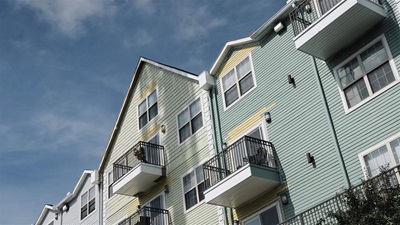The Pew Charitable Trusts’ housing policy initiative works to help policymakers reimagine their approach to housing by illuminating how regulations and statutes drive the housing shortage and rising costs. Strict zoning and land-use regulations have limited the availability of homes, especially lower-cost options such as apartments and townhouses, which could otherwise help meet the nation’s housing demand. At the same time, outdated financial regulations have prevented millions of creditworthy homebuyers—especially Black, Hispanic, and Indigenous people, and those in rural communities—from obtaining a mortgage to finance a low-cost home, pushing many borrowers into riskier and more costly alternative financing arrangements.
Pew studies the ways that policymakers can increase housing availability and safe home financing by revising land-use regulations that have reduced housing supply and increased costs, improve access to small mortgages—those under $150,000—and make non-mortgage financing arrangements safer for homebuyers.

A large body of research has demonstrated that apartment buildings and other types of multifamily housing can provide many benefits to a community, especially when built in high-demand areas where housing is badly needed. Multifamily housing can boost economic opportunity and foster growth while improving affordability; by increasing the availability of housing near jobs, stores, and transportation, it can also reduce commute times, traffic, energy consumption, and water usage.

In 2025, state legislatures enacted unprecedented reforms to improve the availability and affordability of housing, with lawmakers in Texas, Washington, and Montana leading the way with major successes. These states passed bills that target multiple regulatory barriers to increased housing—from parking requirements to building codes—demonstrating how individual reforms can cumulatively bring substantial policy change.

The urgency to build more homes grows as the nation confronts a widespread housing shortage, estimated at 4 million to 7 million homes. To combat this problem, policymakers are embracing manufactured housing—homes built in a factory according to a federal standard—as a fast and efficient solution for communities that need new single-family homes.

Lawmakers across the United States are turning to a relatively simple but potentially effective reform to ease the nation’s housing shortage: Allow small and medium-sized apartment buildings to have a single stairway rather than two, as is required in most of the country.

Most Americans buy their homes using mortgages, but millions take different approaches. Some pay with cash, others inherit properties from family members, and still more use alternative financing arrangements. Alternative financing is often used by homebuyers who are unable to get a mortgage, either because their property does not qualify for a standard loan or because a shortage of small mortgages makes it difficult for them to access financing. Instead, these buyers turn to alternatives that can be risky and costly, with few consumer protections.




